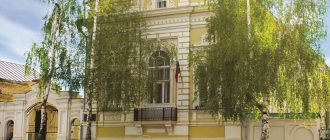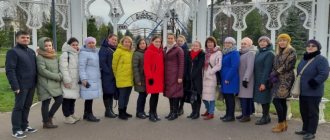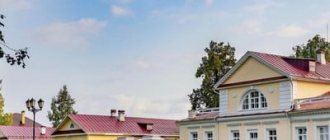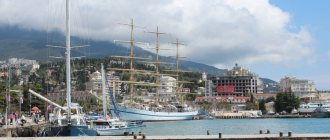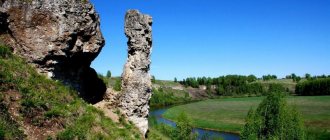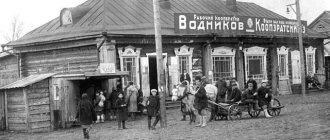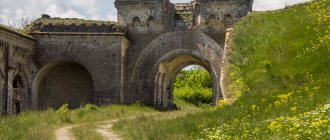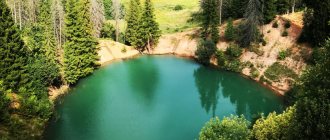A small merchant town on the banks of the Kama is the geographical center of Tatarstan.
The first mentions of the village of Chistoe Polye appear in chronicles at the end of the 17th - beginning of the 18th century. There is a version that the first settlers were runaway peasants or schismatics who created a free settlement, which was burned, and in its place an open field was left. The village was revived, and received its name in memory of the great fire.
By the end of the 19th - beginning of the 20th centuries, Chistopol was a large merchant city, a center of grain trade. During the Great Patriotic War, it became a shelter for more than 200 members of the Union of Soviet Writers. Nobel Prize winner Boris Pasternak began writing the novel Doctor Zhivago here.
Today Chistopol has retained the atmosphere of the district merchant towns. Even the natives discover something new every day while walking along the quiet, cobblestone streets of a provincial Russian town. A special atmosphere is created by ancient merchant houses with ornate lanterns and openwork balconies.
In 2014, the Chistopol State Historical, Architectural and Literary Museum-Reserve .
How to get there from Kazan: by bus Kazan-Chistopol from the Central bus station. Travel time is 2.5-3 hours. You can get to Chistopol by traveling by boat along the Kama. Website: chisto-muzei.ru
What to see first in Chistopol
Chistopol is a merchant city with a rich cultural heritage. It amazes with the variety of interesting objects to view. What attractions should you pay attention to first? What is worth visiting here in one day of stay?
City History Museum
- Address: st. Karl Marx, 8.
You can learn the history of the city and area, well-known and hidden pages of the daily life of merchants and cultural and historical figures in the local history museum. At the time of its opening in 1921, the Museum of the History of the City had this name. The initiator of its creation was the local scientist Alexander Bulich; the exhibition was based on specimens from his personal collection.
Today it is a large museum, which has more than 42 thousand storage units. The exhibition area exceeds 1100 square meters. m. As befits a museum of local history, its exhibitions cover a wide range of topics, telling about the nature of the region, stages of the history and development of the city, about the peoples who inhabited the Tatar lands in the vicinity of Chistopol.
The core of the exhibition is considered to be a section telling about the life of a county town in the 19th century and the life of a merchant. In some sources this museum is designated as the “Museum of the County Town”. The archaeological department, which reveals the secrets of antiquity, is also of great interest.
Since the late 1920s, the museum has settled in a historical building - the main mansion of the former estate of the eminent local merchant family Poduraev. The house in the Empire architectural style was built at the end of the 19th century on Bolshaya Ekaterininskaya Street. In Soviet times, the city artery received a new name in honor of the outstanding German philosopher and to this day remains Karl Marx Avenue.
St. Nicholas Cathedral
- Address: st. Karl Marx, 2.
Among the symbols and calling cards of the city is its main Orthodox church - the Cathedral of St. Nicholas the Wonderworker. The majestic structure, erected in the early 1830s, stands on the shore, proudly rising above the waters of the Kama River.
The five-domed white stone church, complemented on three sides by porticoes with a colonnade, has a formal and austere appearance. This is the creation of the famous master Pavel Pyatnitsky. The construction was sponsored by the wealthy Polyakov family. As a result, one of the most famous temple buildings in all of Tatarstan appeared to the world.
The cathedral building became the epicenter of the entire temple complex. There is a chapel and functional buildings around it. The ensemble is framed by a beautiful fence with an arched gate.
After almost a century of regular spiritual service, the temple was closed by the Soviet authorities in the 30s of the 20th century; the break in work lasted until 1990. During the “downtime” the building became worn out; in order to return it to its original solemn appearance, reconstruction was required.
Dzhuketau ancient settlement
- Coordinates on the map: 55.383642, 50.552571.
The most interesting archaeological site and pearl of ancient history are the remains of the ancient city of Volga Bulgaria, which can be seen not far from Chistopol, off the banks of the Kama. The tourist’s gaze will be attracted by the elevation – Linden Mountain, this is how the name of the ancient settlement – Dzhuketau – is translated from Tatar.
This city was part of the Golden Horde, and in the era of its greatest prosperity it was the center of the principality. The decline is associated with the invasion of Batu’s troops, who ravaged the settlement in the 13th century. The settlement occupies an area of 5.8 hectares, and is adjacent to two more settlements - Donaurovskoye and Krutogorskoye. Several necropolises have also been preserved here.
The scientific study of the object was carried out by a number of archaeologists, including A.I. Artemyev, T.A. Khlebnikova and others. As a result of research and excavations, it was possible to restore a picture of the daily life of the city, discover household items and handicrafts of local settlers.
St. Nicholas Cathedral
Address: K. Marksa, 2 Phone: +7 (24342) 5-42-50, +7 (24342) 5-42-60, +7 (24342) 5-00-73
The cathedral stands on the high bank of the Kama directly above the river and is one of the best church buildings of the first half of the 19th century on the territory of Tatarstan. The author of the project is Pavel Pyatnitsky, an architect who forever glorified his name with the construction of the main building of the Kazan Imperial University.
The complex consists of a temple, a gatehouse, a chapel, extensive arched gates and a metal fence. The cathedral building is a five-domed centric temple with three four-column porticoes of the Ionic order. On the east side of the façade there is an extension of the altar. And on the opposite side there is a bell tower. The facades are designed in the style of classicism. The complex is complemented by a square chapel in pseudo-Russian style.
The three-altar stone St. Nicholas Cathedral was built in 1838 with the money of the Polyakov merchants. A whole constellation of names, besides Pavel Pyatnitsky, is associated with the history of its construction: Thomas Petondi, Mikhail Tyufilin, Vladimir Pomerantsev, Vsevolod Poshekhonov. During the years of Soviet power, the cathedral was closed several times. During the war, Boris Pasternak and Arseny Tarkovsky, evacuated to Chistopol, admired the silhouette of the cathedral. In 1990, one of the first in the diocese, the St. Nicholas Church of Chistopol was returned to the Church.
Beautiful architecture and interesting museums of Chistopol
“City-museum” - this definition fully suits Chistopol. It is no coincidence that a historical, ethnographic and literary museum reserve was created here, which includes all the main city museums. The museum-reserve also organizes excursions around the city, because on the streets of Chistopol you can find many interesting “exhibits” - monuments of architecture and everyday culture.
Literary and Memorial Museum "Teacher's House"
- Address: st. Karl Marx, 28.
The word literary in the name of the museum is not accidental. The fates of famous writers are connected with the city. During the Great Patriotic War, Chistopol remained behind the front line and became a reliable rear for cultural figures.
The local branch of the Writers' Union was located here. The historical building on Karl Marx Avenue is also called the Teacher's House, since before the war teachers were trained here. The house became the center of cultural life: creative debates and performances by writers and poets took place here, receiving applause at a difficult time for the country. Today there is a literary museum here.
The interior has been preserved, keeping the memory of the stay of evacuated authors here: B. Pasternak, A. Fadeev, A. Tvardovsky, M. Isakovsky and many others. The exhibition presents interesting materials and memories of the turbulent life of the Teacher's House.
Memorial Museum of Boris Pasternak
- Address: st. Lenina, 81.
Townspeople and local historians remember the stay of Nobel laureate, poet and prose writer Boris Leonidovich Pasternak here. The writer was among those evacuated. He arrived in Chistopol in 1941.
The house where the writer lived has survived to this day, and in 1990 a memorial museum was opened there. At the beginning of the museum's history, the building, which remembered the outstanding author, remained inhabited. The exhibition was allocated only two rooms in which Boris Leonidovich lived. They recreate an authentic environment. Nowadays, the entire house belongs to the museum.
In addition to the permanent exhibition, which tells not only about the Chistopol period, but also about the life and work of the author in general, temporary exhibitions and various cultural events are held here.
Historical-Memorial and Ethnographic Museum of G. Iskhaki
- Address: Kutlushkino village, Klubnaya st., 10.
A local literary celebrity - Tatar writer Gayaz Iskhaki, a native of Chistopol district - is known for his creative and social activities. The novelist and publicist was an active participant in the national movement in Tatarstan.
In the writer’s native place, in the village of Kutlushkino, a museum has been operating in his honor since 1993. The house where the writer grew up has not been preserved, so the exhibition was first opened at the village cultural center, and later transferred to a merchant’s house belonging to the writer’s relative, a Tatar merchant. Ishaki stayed here when he came home on leave. The building is included in the cultural heritage list.
The museum tells not only about the life and work of this famous person, but also about the history and life of the Tatar village, about the everyday life of the original Tatar family, about the atmosphere in which the writer was formed.
The mansion of merchant Melnikov and the museum souvenir salon
- Address: Karl Marx street, 31.
A beautiful L-shaped corner building with an elegant bell-shaped “turret-dome” is an architectural monument of the 19th century, an object of cultural heritage of the Republic of Tatarstan. This is the main house of the estate complex of the wealthy merchant family of the Melnikovs, with outbuildings and outbuildings adjacent to it.
An example of an eclectic architectural style has incorporated elements of Art Nouveau; bay windows, massive cornices, platbands of large rectangular windows and other elements of rich but austere decor attract attention.
Inside the building there is one of the structural divisions of the museum-reserve - the museum souvenir salon, where works of decorative and applied art, handicrafts, works of artists, a variety of souvenirs, and printed publications are presented.
Chukashev estate and museum and exhibition complex
- Address: Karl Marx street, 15.
Another famous merchant estate in Chistopol also became one of the exhibition sites as part of the museum-reserve. The construction of the main house dates back to the first half of the 19th century, since the structure was recorded in the master plan of 1848.
The estate was built by the Chukashev merchant family at their own expense. The eclectic architectural appearance combines elements of classicism and baroque. The two-story residential building is richly decorated. The house has gone through a lot in its history, it was both the headquarters of the Red Army and an agricultural technical school, and hosted a factory workshop within its walls.
And starting from 2022, there are several interesting exhibitions dedicated to the history of the Soviet era: the Great Patriotic War, Soviet childhood. And one of the expositions is completely dedicated to Moscow.
Theological school building
- Address: Babel street, 121.
The history of the Chistopol Theological School began back in 1829. The educational institution acquired a three-story building on Bebel Street only towards the end of the 18th century; a new building was erected from 1891 to 1895.
The upper floors were occupied by the house church, consecrated in honor of St. Helena. Funds for construction were provided by the Chukashev merchant family. The eclectic appearance of the building, combining modern features with elements of stylization in the “pseudo-Russian” and “neo-Gothic” style, is the result of the work of the hereditary architect Lev Khrschonovitch.
The building is an outstanding example of civil architecture and is included in the list of cultural heritage sites of Tatarstan. During Soviet times, the building continued to perform an educational function; a branch of Kazan University settled here.
Estate of merchant Shashin
- Address: Narimanov street, 44.
A luxurious-looking historical building with large arched windows is the main house of the Chistopol estate, which was owned by the merchant Shashin. This is a monument to the eclectic architectural style, richly decorated in the Baroque spirit. Around the building there is a fence marking the courtyard area; the gates are made in the form of arches. There are outbuildings nearby.
The house where A.A. lived Akhmatova
A nondescript one-story corner building, built at the beginning of the 20th century, became a literary landmark. It would hardly have been included in the list of noteworthy places in the city if in 1941 its walls had not received the famous poetess Anna Andreevna Akhmatova. It was here that she created her famous work “Poem without a Hero.”
The house where the writer K. Fedin lived
“Test of Feelings” is a famous work by writer and playwright Konstantin Fedin. The play was born in Chistopol. The author was among those evacuated; Fedin spent two war years in a small wooden house located on Butlerov Street. In 1985, the board-clad building on a brick foundation acquired a memorial plaque commemorating the writer’s stay here. Unfortunately, it was recently demolished and a new building will be erected.
Estate of merchant Myasnikov
- Address: Lenin street, 34.
A remarkable elegant wooden building on Lenin Street serves as a meeting place for the hearts of loving Chistopol residents. It is given a ceremonial appearance by the presence of a portico with columns - not a common attribute for wooden structures. The registry office is located in a former merchant's house, rebuilt in the period 1870-1873. At the beginning of the 20th century, the owner of the land and the buildings located on it was the merchant E. Myasnikov.
Water tower
- Address: corner of Valieva and Pushkin streets.
The infrastructure facility of the early 20th century stands out for its unusual shape. The water tower in the city appeared thanks to merchant Ekaterina Chelysheva, who sponsored the construction. Currently he does not perform any functions. Notable as an object of everyday culture.
How to get there?
Excursion from Kazan
There are no direct routes to the city from Moscow. You can come by train or fly by plane to Kazan or Nizhnekamsk. From here you can take a bus to Chistopol. The distance between settlements is 110 kilometers. You can also use the services of cruise ships. Due to the inconvenient geographical location, many people prefer to book excursions here. This option is also beneficial because the trip becomes more organized.
The lands were considered state-owned. The government was wary that the territory had been seized without permission. For a long time, people turned a blind eye to this situation. But ultimately, the tsarist troops arrived here and burned the village. An empty field also formed in place. However, the land was empty for long. Soon new residents arrived here. This time it was the sovereign's peasants. The settlement was rebuilt. Among the residents there were many former fugitives who managed to avoid exile. By the mid-18th century, the village had expanded significantly. Residents mainly specialized in trade. By 1761 the population exceeded a thousand people. Twenty years later it was given the status of a district town called Chistopol. In 1781, a coat of arms appeared.
Over time, the settlement grew and developed. The modern city carefully protects its historical roots. However, the empty bread square still remains, reminiscent of the events of the past.
Since the city was a district city, it had to have a representative Orthodox cathedral. A temple in the name of St. Nicholas of Myra appeared on the territory of the settlement. It was built in the spirit of Russian classicism and required considerable investments and efforts for construction. Construction was financed by merchants.
Chistopol occupied a leading position in the sale of bread. The grain was sent to many localities in Russia and abroad. The leading merchant dynasties of that period were primarily engaged in trade. By the end of the 19th century, it had already been given the status of a major grain trading center. In 1832, the first engine appeared at the city mill. On the Kama, merchants became owners of river fleets. In the 20th century, a trading exchange was formed. Its charter was approved by Nicholas II himself.
In 1829, a regular building plan appeared. He envisioned the construction of a city on both sides of the Kama River. This scheme was considered traditional for the Volga region. Before the October Revolution it was a prosperous city. In 1914, pounds of bread and grain were sent to the front.
Mosques and temples of the city of Chistopol
Tatarstan is a region where two religions coexist: Islam and Orthodoxy. The appearance of the city successfully combines ancient and modern churches for adherents of both faiths.
The first cathedral mosque "Nur"
- Address: st. Vakhitova, 39.
A wooden religious building in the traditions of national Tatar temple architecture of the 19th century. The mosque is the oldest in Chistopol and is one of the most ancient Islamic temples in all of Tatarstan. It was built in 1854 thanks to the investments of a merchant named Yakupov. The temple continues to regularly welcome adherents of the Islamic faith; throughout history, its activities have never stopped.
Iman Mosque
- Address: st. 40 years of Victory, 11.
The three-story temple, 6.5 meters high, was built in the 1990s and is considered the fourth largest mosque in the territory of the Republic of Tatarstan. Its total area is more than 1300 sq. m. An Islamic educational institution has been organized at the temple - a madrasah, where classes are held daily.
Church of the Kazan Icon of the Mother of God
- Address: st. Karl Marx, 67.
In the old cemetery of Chistopol, a monument of Orthodox culture has been preserved, an example of classicism in church architecture of the 19th century. The Kazan Church is the creation of the architect I.P. Bessonova, was built from 1840 to 1848. In the 1930s Soviet authorities closed the church, its premises were used as a prison. However, the break in spiritual service was short-lived; already in the war of 1943, the church again received parishioners.
Temple "Tenderness"
- Address: st. Lenina, 54K.
The newly-founded Orthodox church in Chistopol opened in 2013 on the occasion of the 1025th anniversary of the baptism of Rus'. It was decided to consecrate the temple in honor of the Tenderness icon. The brick religious building is remarkable for its interior decoration; the walls of the temple are decorated with picturesque paintings and frescoes with the lives of saints. They were created by artists from the Palekhovy Image workshop; a total of 18 specialists worked on the paintings.
Anas Mosque
- Address: st. Michurina, 10B.
With the revival of the religious culture of the peoples of Russia in recent decades, new Muslim churches began to appear in Chistopol. The Anas Mosque, built in 2009, looks very elegant. The initiator of the construction was a police officer, Colonel T. Akhmedzyanov.
The design of the building's façade combines green, orange and white colors. The Islamic temple is richly decorated. It has two separate entrances, for men and for women. Separate prayer halls are provided for parishioners of different genders in accordance with the traditions of the Muslim religion.
County town museum
Address: K. Marksa, 8 Phone: +7 (84342) 5-11-07, +7 (84342) 5-11-00 Opening hours: Tue-Sat – 09:00-17:00
The museum of the county town in Chistopol is located in an old merchant mansion of the late 19th century, which previously belonged to the Kazan merchant A.A. Poduruev and his wife Maria Ivanovna, nee Stakheeva. The museum building is an architectural monument of the Republic of Tatarstan.
The most interesting exhibits from the old archaeological, paleontological, biological and botanical collections: Bulgar chain mail, found in 1921, a rich collection of remains of ancient animals - mammoths, bison, rhinoceroses and unicorns.
The museum's largest collection of written sources includes documents from the end of the 17th century to the present day, handwritten and early printed books. Among them are “Church Singing Practice”, “Irmos”, “Chanter’s Trelling”, “Lives of the Saints” 1762, “Gospel” 1856 and others.
The museum archive contains letters, pages from diaries, photographs, documents of famous writers who were evacuated in Chistopol during the war. The pearl of the collection are two wooden bicycles. They were made by peasant Nikolai Melnikov: one in 1902, the second seven years later. Story
The museum was founded in 1921 by amateur local historian Alexander Bulich. He had his own collection of antiquities, some of which survive today.
Chistopol gardens and parks where you can take a walk
In Chistopol there are several interesting squares and parks where citizens and tourists love to stroll in the evenings and more. As a rule, guests come here with children - attractions and entertainment are prepared for them.
Skaryatinsky Garden
- GPS coordinates: 55.364946, 50.647097.
The city's most famous park is not just a popular place for walking, but also an important historical landmark, one of the symbols of Chistopol, which has existed for more than a century and a half. The garden was laid out in 1867.
The garden received its name in honor of the statesman Nikolai Skaryatin. When he was governor, he gave local officials a thrashing for the presence of cluttered, unsettled territory in the city. This is where the garden appeared.
After the revolution, it was renamed the Karl Marx Park of Culture and Leisure, and a bust of the German philosopher appeared here. Then the garden was given back its historical name. In the 21st century, the park underwent reconstruction, its appearance was updated in accordance with the realities of the modern era.
Park-embankment KAMA
- Coordinates: 55.375772, 50.637691.
In 2015, a park was built along the banks of the Kama River, located on the embankment between the city beaches. At the entrance, visitors are greeted by elegant gazebos, next to which you can see an interesting art object - a clock that looks somewhat reminiscent of the legendary Big Ben.
The “Tree of Love” “grew” here, to which newlyweds traditionally come. Children coming here can have fun on the carousel, and adults can take a walk, enjoy the local scenery and swim. The surrounding beaches are equipped with everything necessary and meet safety requirements.
Mill Park
- Coordinates: 55.354973, 50.642183.
Near the 40th Anniversary of Victory Street you can see a park in the center of which there are three mills, one large and two smaller. This is a relatively new city attraction - the result of the initiative of local deputy V. Smykov. The Mill Park appeared in 2011.
What monuments in Chistopol are worth visiting?
Chistopol monuments, monuments and memorials tell a lot of interesting things about the history of the city.
Monument to B. Pasternak
- Address: Skaryatinsky Garden.
Opposite the house of the B. Pasternak Memorial Museum, in the Skaryatinsky Garden, there is a monument to the writer. It was opened in 2015 on the occasion of the 125th anniversary of the author's birth. A three-meter bronze sculpture depicting young Boris Pasternak is the work of Moscow sculptors V. Demchenko and A. Golovachev.
Memorial complex "Alley of Heroes"
- Address: intersection of K. Marx and Babel.
In 1968, a monument dedicated to the Great Patriotic War was opened in Chistopol. In memory of the fallen soldiers, the Eternal Flame burns here. The central figure of the composition is a soldier; his sculpture was created by master I. Romanov. By 1975, a “Walk of Fame” appeared next to the monument, consisting of steles with the names of Chistopol heroes.
Thus, the final architectural appearance of the memorial complex in memory of the Great Patriotic War, which received the name “Alley of Heroes,” was formed. In addition to Ivan Romanov, sculptors Vladimir Skorokhodov, Pavel Samoilov and designer Ivan Chupaev took part in the creation of the complex.
Monument to the fighters for the establishment of Soviet power
- Address: intersection of Tolstoy and Marx streets.
The Monument to the Fighters for Soviet Power attracts attention with its composition. It was opened in 1957 on the site where the dead Bolsheviks were buried. The inscription on the pedestal: “Eternal glory to the fearless, faithful sons of the Motherland” is meaningful, does not give away “Soviet” content, and looks modern. The author of the monument is the famous Kazan sculptor I.A. Novoselov.
Memorial Museum of Boris Pasternak
Address: Lenina, 81 Phone: +7 (84342) 5-42-65 Opening hours: Tue-Sat – 09:00-17:00
The Memorial Museum of Boris Pasternak, an outstanding writer, poet, translator, Nobel Prize winner, is located in a house classified as a historical and architectural monument of the late 19th - early 20th centuries. The poet lived in it during the years of evacuation in Chistopol.
Almost nothing has changed in the external and internal appearance of the house since those distant war years. Opposite the house, the old linden trees that Pasternak saw still grow. The museum exhibition was created on the basis of memorial items preserved by the widow of the owner of the apartment, E.I. Korostyleva.
In Boris Leonidovich’s room, the attention of visitors is attracted by a bookcase, a bed, a couch in the corner and a painting on the wall “Children running from the rain”, chairs. On the desktop are personal items: an inkwell and a glass holder. Typological objects of the era are also presented in this small room: a kerosene lamp and a black loudspeaker plate. All this surrounded the poet in those harsh days, and here his presence is felt in everything.
The B.L. Pasternak Memorial Museum opened in Chistopol in 1990 in honor of the centenary of his birth. This is the first state Pasternak museum in Russia. In Chistopol, the poet created the most famous translation of Romeo and Juliet, considered a classic. And it was here that he found the prototypes of the heroes of the immortal novel Doctor Zhivago.
Active recreation and entertainment in Chistopol
There are also places in Chistopol for active leisure and entertainment that you can visit in your free time after viewing cultural and historical attractions.
Cultural
- Address: st. Lenina, 17A.
Has been working in the city since 2010. The municipal cultural institution organizes recreation and leisure for the whole family: here you can visit a cinema or concert hall, play sports in a gym or fitness room, play bowling or billiards.
There are playrooms and slot machines for children. The center also offers services for holding celebrations and banquets. The institution is equipped with everything necessary for visiting it, including for people with disabilities.
Ice Sports Palace
- Address: st. Votyakova, 23.
Ice skating enthusiasts in Chistopol do not have to wait for winter - the Ice Sports Palace with artificial ice is open for them, where athletes train and public skating sessions are organized for everyone. It was opened in 2007 and now operates as a Children and Youth Sports School. In addition to the skating rink, there is a gym and a choreography department.
